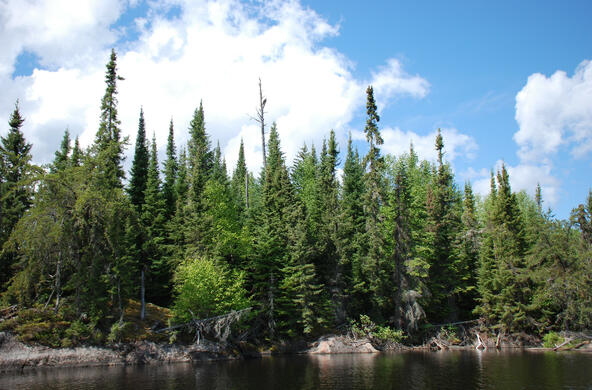Sometimes the littlest things cause the biggest problems. For forests in the Northeast, small invasive species like beetles or fungus pose a more immediate danger than do air pollution and climate change. These pests are assisted by a variety of short-sighted human actions.
Cary Institute forest ecologist Gary Lovett, who studies the ecosystem effects of introduced insects and pathogens such as gypsy moth, hemlock woolly adelgid, and beech bark disease, is sounding the alarm for citizens and politicians. "This problem is not new—most people are familiar with how chestnut blight and Dutch elm disease eliminated these species from our landscapes—but the pace at which new pests are being introduced is new," Lovett notes. "People don't realize the grave threat these invaders present to whole species and ecosystems. It's biological pollution."
Unlike global warming, which creeps up slowly over decades, biological pollution is a surprise attack, and time is not on the side of invaded forests. The emerald ash borer, for example, was introduced in Detroit in 2002, probably through untreated wood packing material in cargo containers from Asia. The larvae of this exotic beetle feed on the inner bark of ash trees, disrupting the flow of nutrients and killing the tree. The pest has spread east and west, and outbreaks have already occurred in Saugerties and West Point. "It's only a matter of time before it reaches the east side of the Hudson. I predict large stands of ash trees will not exist in this area in ten years," says Lovett.
Once these pests are established, there is no consistently effective way to conquer them; people might be able to treat and save a particular tree in their own yard, but the pests are simply going to find another. Which is why Lovett urges people to focus instead on next invaders, not the established ones. "The best way to ward off invaders is to keep them away in the first place."
Alien forest pests enter the country by two main pathways: wood packing material and imported horticultural plants. While cleaning up packing material will require stricter federal regulations and enforcement, individuals can help reduce the second pathway by landscaping with native instead of imported plants.
"Sudden Oak Death disease is a good example of how biological pollution needlessly occurs when people choose exotic plants," remarks Lovett. "This pathogen probably arrived on imported rhododendrons and, in a little over a decade, has devastated some species of oak in Oregon and northern California. Yet native rhododendrons are widely available from nurseries."
Another recent arrival that might have been avoided is the Asian longhorned beetle, which affects North American hardwoods, especially maples. Outbreaks have been recorded from Chicago to central Massachusetts, where over 25,000 affected trees have been removed at a cost of hundreds of thousands of dollars to taxpayers.
In all, invasive forest insects cost Americans over $5 billion per year. "Catastrophic loss of tree species and a huge taxpayer burden—where's the sense in this?" Lovett asks. "Nobody relishes campaigns to change consumer behavior and to increase federal enforcement of trade regulations, but we need precisely this before maples, ash, hemlocks, and other key species go the way of the chestnut."





